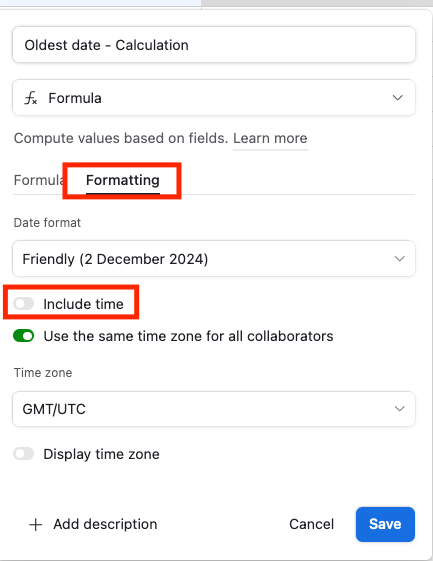Create 1 column that combines the dates (combining them so that they remain separate would be ideal, but otherwise, it could just be text formatted like this "MM/DD/YYYY, MM/DD/YYYY").
Try this:
REGEX_REPLACE(
IF(
{Date 1},
DATETIME_FORMAT(
{Date 1},
'MM/DD/YYYY'
) & ', '
) &
IF(
{Date 2},
DATETIME_FORMAT(
{Date 2},
'MM/DD/YYYY'
) & ', '
) &
IF(
{Date 3},
DATETIME_FORMAT(
{Date 3},
'MM/DD/YYYY'
) & ', '
) & "",
".{0,2}$",
""
)

---
Then I'd like to have another column that shows the oldest date and a column that shows the most recent date.

For this I'd recommend two fields so that you don't have to repeat the formulas. The first field, 'Calculation', would provide the earliest date, the problem is that if there are no published dates it'll output 1 Jan 1970:
DATETIME_PARSE(
MIN(
IF(
{Date 1},
DATETIME_FORMAT(
{Date 1},
'x'
) + 0
),
IF(
{Date 2},
DATETIME_FORMAT(
{Date 2},
'x'
) + 0
),
IF(
{Date 3},
DATETIME_FORMAT(
{Date 3},
'x'
) + 0
)
),
'x'
)
And so we use a second field to handle the display element so that we don't need to repeat the formula that combines all the dates for us. This is a personal preference thing that makes things easier to manage and if you won't be adding more date fields you can just combine these two fields really
IF(
DATETIME_FORMAT(
{Oldest date - Calculation},
'x'
) != 0,
{Oldest date - Calculation}
)
---
Another column that just adds the number of times the content has been published, so counts the number of fields with a date in them.

COUNT(
IF(
{Date 1},
DATETIME_FORMAT(
{Date 1},
'x'
) + 0
),
IF(
{Date 2},
DATETIME_FORMAT(
{Date 2},
'x'
) + 0
),
IF(
{Date 3},
DATETIME_FORMAT(
{Date 3},
'x'
) + 0
)
)
Link to base





